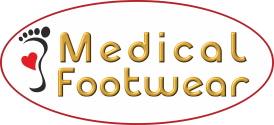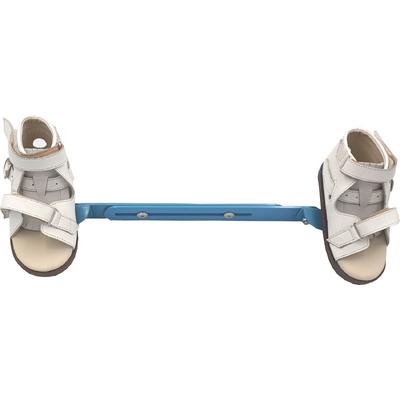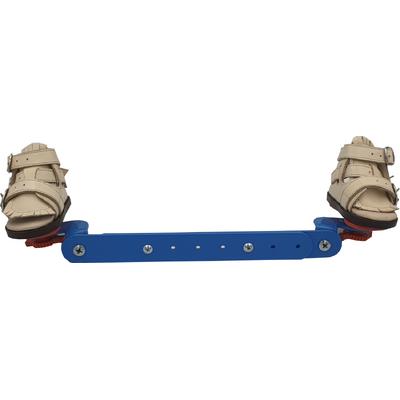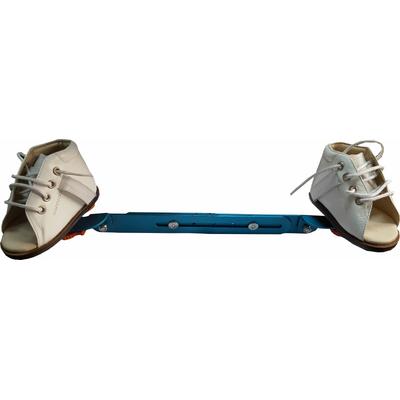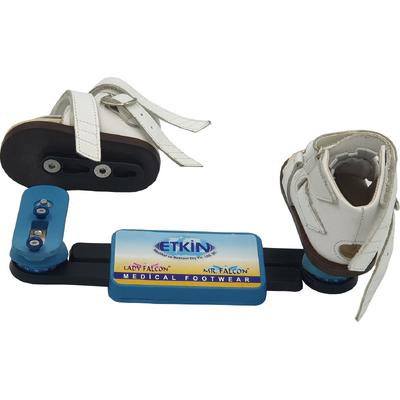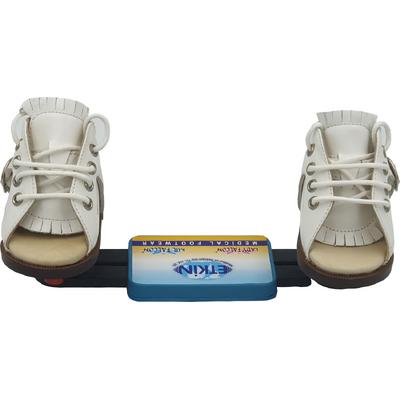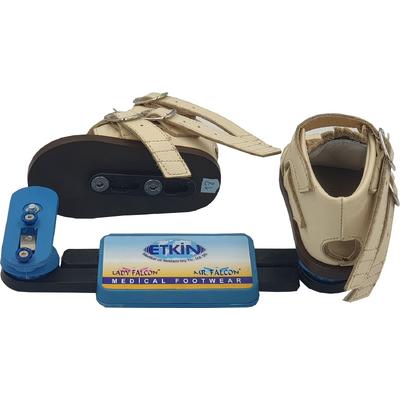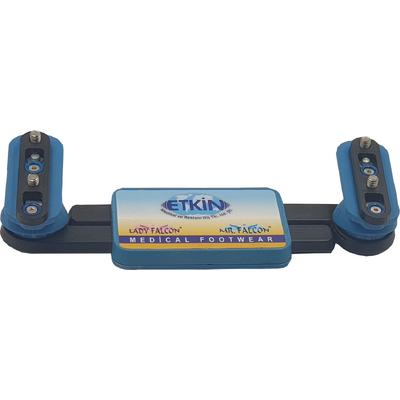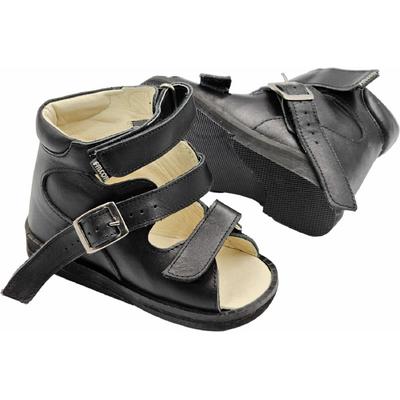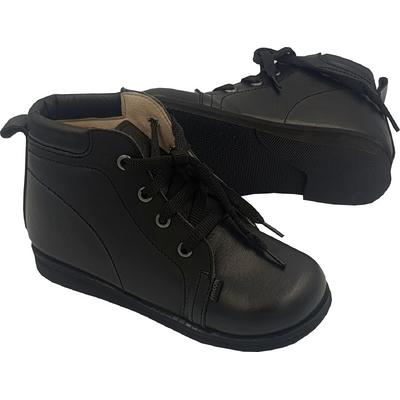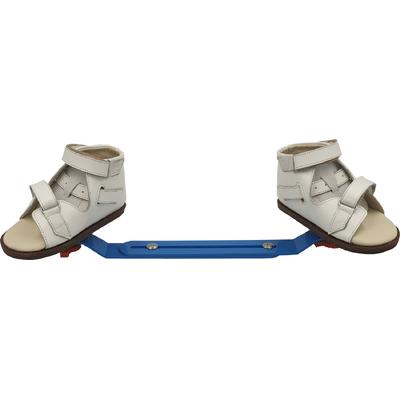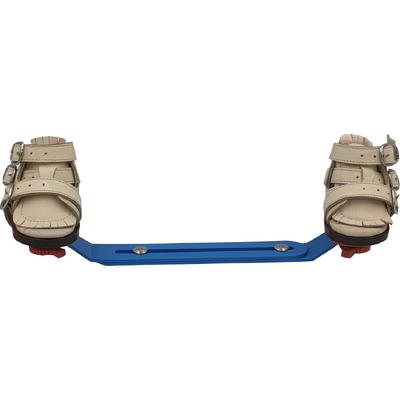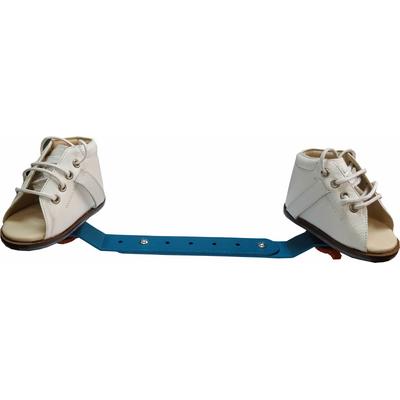Sub Categories
Filtering
- 308.00 USD
- 299.00 USD
- 189.00 USD
- 189.00 USD
- 308.00 USD
- 308.00 USD
-
Initial Evaluation: The treatment typically begins shortly after birth with a thorough examination of the baby's foot by a trained healthcare provider. X-rays or other imaging may be used to assess the severity of the clubfoot and to rule out any other associated conditions.
-
Manipulation and Casting: The first step in the Ponseti method involves gentle manipulation of the foot to move it into a corrected position. The foot is gradually stretched and aligned to a more normal position. Following the manipulation, a plaster cast is applied to hold the foot in place. The cast is changed approximately every week during the initial phase of treatment.
-
Serial Casting: The process of manipulation and casting is repeated over several weeks, with each cast progressively moving the foot closer to the correct alignment. The casting helps to stretch the tight tissues and tendons around the foot, allowing for gradual correction.
-
Tenotomy: In some cases, a minor surgical procedure called tenotomy may be performed. This involves a small incision to release the tight Achilles tendon, which allows further flexibility and correction of the foot. The procedure is typically done in a clinic setting and does not require general anesthesia.
-
Bracing: After achieving the desired correction, the baby is transitioned to a brace to maintain the corrected position. The most commonly used brace is the Denis Browne bar or boots and bar, which is worn full-time for a few months and then gradually reduced to nighttime wear for several years.
-
Follow-up and Monitoring: Regular follow-up visits with the healthcare provider are essential to monitor the foot's progress and ensure the maintenance of correction. The child's growth and development are closely monitored to address any issues that may arise during the treatment process.
What is clubfoot, and how is it diagnosed in newborns?
Clubfoot, also known as congenital talipes equinovarus (CTEV), is a congenital deformity that affects the feet of newborns. It is characterized by the inward and downward twisting of one or both feet, causing them to appear rotated or turned inward.
Diagnosing clubfoot in newborns typically involves a physical examination shortly after birth. Pediatricians, orthopedic specialists, or experienced healthcare providers can identify the condition by observing the foot's appearance and range of motion. Key features of a clubfoot include:
* The foot is turned inward and downward, resembling the shape of a golf club.
* The heel may be in a raised position, and the front part of the foot may be smaller and turned inward.
* The calf muscles on the affected leg may appear smaller than the unaffected side.
* The affected foot may not have the same range of motion as a normal foot.
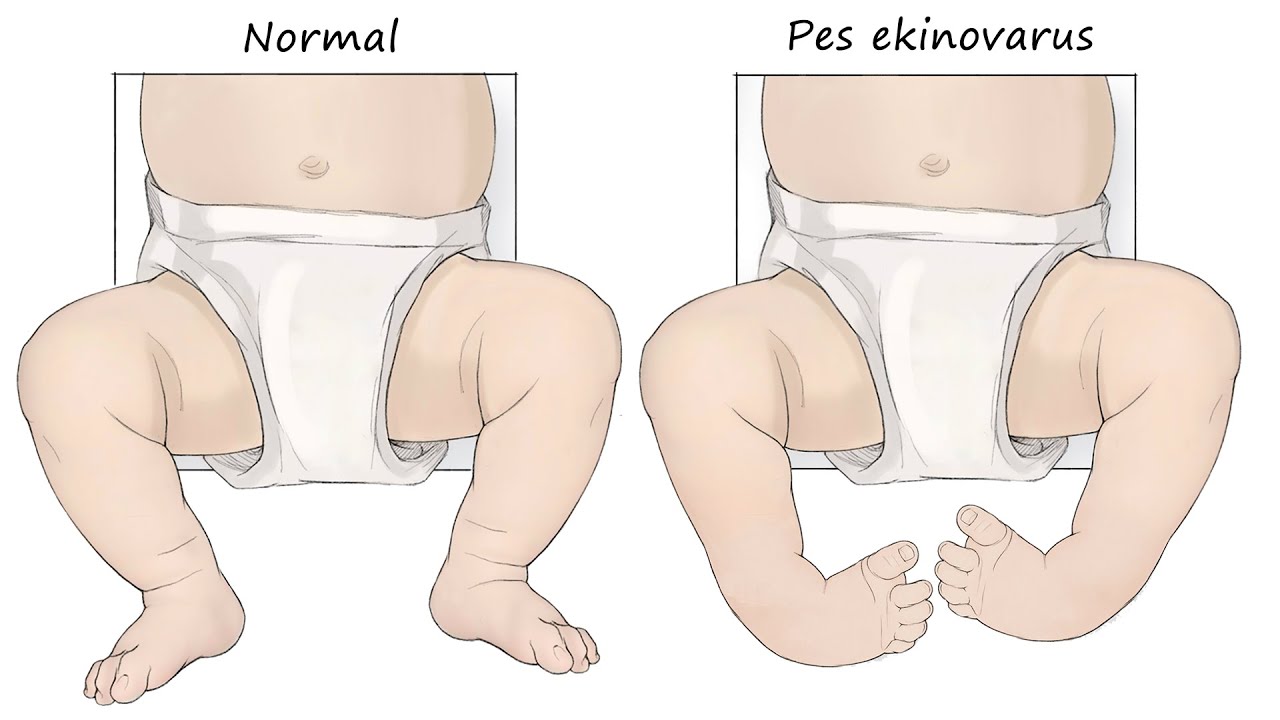
If clubfoot is suspected, imaging studies, such as X-rays or ultrasounds, may be used to confirm the diagnosis and assess the severity of the condition. These imaging techniques can help evaluate the position of the bones, joints, and muscles in the foot and aid in determining the most appropriate treatment approach.
Early diagnosis of clubfoot is crucial as treatment is most effective when started soon after birth. With timely intervention and proper treatment, the majority of infants born with clubfoot can achieve successful correction and lead active, functional lives as they grow older. The most common treatment methods for clubfoot include the Ponseti method, which involves gentle manipulation, casting, and bracing, or in more severe cases, surgical intervention. Regular follow-up and ongoing care are essential to ensure the best possible outcomes for children with clubfoot.
It is recommended by the doctor to use it with dennis brown shoes and splint after the plastering process.
What are the causes of clubfoot, and is it preventable during pregnancy?
The exact causes of clubfoot, or congenital talipes equinovarus (CTEV), are not fully understood. However, it is believed to result from a combination of genetic and environmental factors. While the specific cause may vary from case to case, several factors have been identified as potential contributors to the development of clubfoot:
* Genetic Factors: Clubfoot can run in families, suggesting a genetic component. If a parent or close family member has clubfoot, there is a slightly higher chance of a child being born with the condition.
* Intrauterine Positioning: Some cases of clubfoot may be associated with the positioning of the fetus in the womb. Limited space or abnormal positioning during fetal development can affect the foot's normal growth and result in clubfoot.
* Muscular and Tendon Abnormalities: Abnormalities in the muscles and tendons of the lower leg may contribute to the development of clubfoot. These abnormalities can affect the foot's positioning and cause it to turn inward and downward.
* Environmental Factors: Certain environmental factors, such as maternal smoking or the use of certain medications during pregnancy, have been associated with an increased risk of clubfoot. However, the exact relationship between these factors and clubfoot development is not fully understood.
As for prevention, it's important to note that in many cases, clubfoot occurs without any known preventable cause. While there is no guaranteed way to prevent clubfoot during pregnancy, some steps can be taken to promote overall prenatal health:
* Regular Prenatal Care: Attending regular prenatal check-ups and following medical advice throughout pregnancy can help ensure a healthy pregnancy.
* Avoiding Harmful Substances: Pregnant women should avoid smoking, alcohol, and illicit drugs, as these substances can pose risks to fetal development.
* Managing Chronic Conditions: If a pregnant woman has certain chronic conditions, such as diabetes, it's essential to manage them effectively with the help of healthcare providers.
* Seeking Genetic Counseling: If there is a family history of clubfoot or other congenital conditions, seeking genetic counseling can provide valuable insights and guidance.
While it may not be entirely preventable in all cases, early detection through routine prenatal screenings and timely intervention after birth can significantly improve the outcomes for infants born with clubfoot. Early treatment using methods like the Ponseti method and appropriate footwear or splints can lead to successful correction and improved quality of life for the affected child
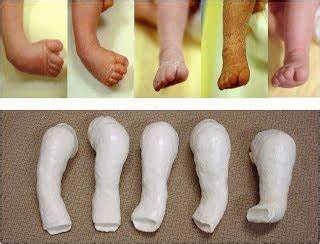
Ponseti Method
How common is clubfoot, and does it occur more frequently in certain populations?
Clubfoot, or congenital talipes equinovarus (CTEV), is one of the most common congenital musculoskeletal anomalies affecting newborns. Its prevalence varies across populations, but it is generally considered to be a relatively common condition worldwide.
The occurrence of clubfoot can differ among different ethnic and racial groups, and it has been observed that certain populations may have a higher incidence of the condition. Some studies suggest that clubfoot occurs more frequently in certain regions or countries, while other populations may have lower rates.
In general, the incidence of clubfoot is estimated to be around 1 in 1,000 live births. This means that approximately 1 out of every 1,000 babies born will have clubfoot. The condition may affect one foot (unilateral) or both feet (bilateral), and it is more common in boys than in girls.
It is important to note that while clubfoot can occur in any population, certain geographical regions or ethnic groups may have higher rates. However, the exact reasons for these variations are not entirely clear and may be influenced by genetic, environmental, or other factors.
Research and data collection continue to improve our understanding of clubfoot's prevalence and distribution among different populations. Early detection, diagnosis, and appropriate treatment remain essential in managing clubfoot effectively, regardless of its frequency in specific populations. With proper care and intervention, most children born with clubfoot can achieve successful correction and lead active, fulfilling lives.
Look at the best selling dennis brown shoes
Club Foot
How successful is the Ponseti method in correcting clubfoot, and what does the treatment process involve?
The Ponseti method is highly successful in correcting clubfoot deformity, and it is considered the gold standard for non-surgical treatment. When started early and followed consistently, the Ponseti method has a success rate of over 90%, making it the preferred approach for managing clubfoot in infants.
The treatment process of the Ponseti method involves a series of steps that aim to gradually correct the position of the affected foot. Here's an overview of the treatment process:
The Ponseti method is generally well-tolerated by infants, and the success of the treatment depends on consistent adherence to the treatment protocol. It offers an excellent chance of achieving functional and cosmetically pleasing correction of clubfoot, enabling the child to lead an active, normal life. However, early detection and timely initiation of treatment are crucial for optimal outcomes. Parents and caregivers should work closely with healthcare professionals experienced in the Ponseti method to ensure the best results for their child.
What role do splints and braces (e.g., Dennis Brown splints) play in the treatment of clubfoot?
Splints and braces, such as Dennis Brown splints, play a critical role in the treatment of clubfoot, especially after the initial correction using methods like the Ponseti technique. These devices are an essential part of the ongoing maintenance phase of clubfoot treatment, aimed at preventing relapse and maintaining the corrected foot position. Here's how splints and braces are utilized in the treatment of clubfoot:
Preventing Relapse: After the initial correction of clubfoot through casting and manipulation (e.g., Ponseti method), there is a risk of the foot reverting to its original position. Splints and braces are designed to prevent relapse by holding the corrected foot in the proper alignment during the growth and development of the child.
Maintaining Foot Alignment: The primary function of splints and braces, such as Dennis Brown splints or boots and bar, is to maintain the foot in the corrected position while allowing for normal movement and development. They keep the foot in a specific alignment that encourages proper bone and muscle development as the child grows.
Gradual Reduction of Use: Initially, the splints or braces may need to be worn full-time to ensure the foot's stability and prevent relapse. As the child's foot improves and matures, the wear-time is gradually reduced to nighttime use, usually up to the age of 4 or 5 years. This gradual reduction helps the foot adapt to the corrected position over time.
Comfort and Convenience: Splints and braces are designed to be comfortable for the child to wear. They are usually made of lightweight materials and padded for added comfort. Ensuring the child's comfort helps with compliance, ensuring that they wear the device as prescribed.
Monitoring and Adjustment: During the bracing phase, the child's progress is closely monitored by the healthcare provider. Adjustments to the brace may be made as needed to accommodate growth and ensure optimal correction.
Long-Term Follow-up: Even after the child stops using the brace, regular follow-up visits are essential to monitor the foot's development and address any potential issues that may arise.
Splints and braces play a crucial role in the successful long-term management of clubfoot. They provide the necessary support and stability, preventing relapse and allowing the child to develop a functional, properly aligned foot. Parents and caregivers should follow the healthcare provider's instructions carefully and ensure that the child wears the splints or braces as prescribed to achieve the best outcomes.
Our varieties of Dennis Brown Bar
Are there specific shoes or footwear that can help children with clubfoot after treatment?
There are specific shoes and footwear designed to support and accommodate children who have undergone treatment for clubfoot. After the initial correction using methods like the Ponseti technique and the use of splints or braces, appropriate shoes are essential to maintain the corrected foot position and provide comfort and support during the child's growth and development. Here are some types of footwear commonly used for children with clubfoot after treatment:
Special Orthopedic Shoes: Specialized orthopedic shoes are designed to provide the necessary support and ensure the foot remains in the corrected position. These shoes are typically lightweight, flexible, and have a design that accommodates the specific needs of the treated foot. They may have adjustable straps or laces to provide a customized fit.
Custom-Made Shoes: In some cases, custom-made shoes are prescribed for children with clubfoot. These shoes are tailor-made to the child's unique foot shape and offer the best possible fit and support. Custom-made shoes are particularly beneficial for children with more complex or severe clubfoot conditions.
High-Top Shoes: High-top shoes can provide additional stability and support for children with clubfoot, especially those who may have residual weakness or mobility issues. These shoes extend above the ankle, offering extra support to prevent the foot from rolling inward.
Ankle-Foot Orthoses (AFOs): Ankle-foot orthoses are devices that offer support to the ankle and foot. They can be used in conjunction with shoes and are particularly helpful for children with ongoing foot alignment issues or muscle weakness.
Orthotic Inserts: Orthotic inserts or insoles can be used inside regular shoes to provide added support, cushioning, and proper foot alignment. These inserts are often recommended for children who have minor residual foot issues.
It's essential to consult with a pediatric orthopedic specialist or a healthcare provider experienced in treating clubfoot to determine the most appropriate footwear for the child. The choice of shoes or orthotic devices may vary depending on the child's individual needs, foot condition, and level of activity. Properly fitting and supportive footwear is crucial in maintaining the successful correction achieved through treatment and ensuring the child's continued comfort and mobility. Regular follow-up visits with the healthcare provider can help assess the child's progress and make any necessary adjustments to the footwear as the child grows.
